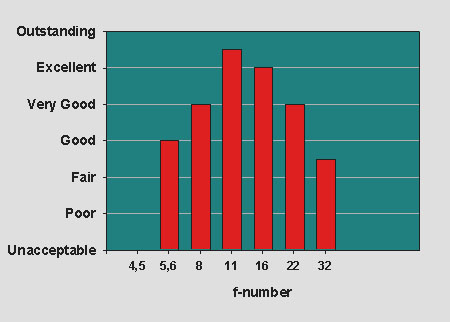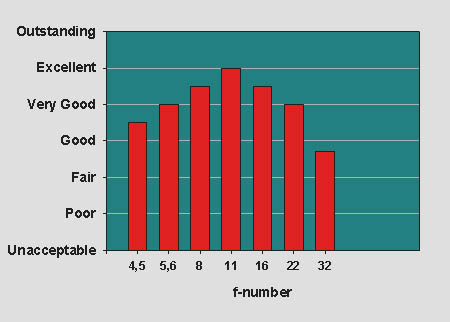 |
Panning with the 80-400 VR lens and its VR circuitry turned on © Bjørn Rørslett |
A Shock-Proof Experience: The 80-400 mm f/4.5-5.6 VR AF-ED Nikkor Reviewed
By Bjørn Rørslett
 |
Panning with the 80-400 VR lens and its VR circuitry turned on © Bjørn Rørslett |
"What did you learn in school today?" - Do you remember that old song by Tom Lehrer? Probably not, these were bygone days. Thus, the Japanese engineers cleverly avoided learning anything from past experience when they designed the AF-VR 80-400 mm f/4.5-5.6 ED Nikkor. They forgot that a long lens, even one equipped with vibration reduction technology, sometimes must be operated on a tripod. They forgot that a tripod-mounted lens must function equally well with the VR circuitry switched on. And finally, they forgot to design a sturdy tripod collar. All this they did while developing innovative vibration reduction wizardry in a compact, high-performance lens. This isn't even food for thought, this is a disaster in industrial design and certainly boggles my mind. It is my challenge as an objective reviewer to bring these sad news to the attention of a wider audience.
So, what is all the fuss about? Let's start with a a short description of the 80-400 VR Nikkor. This is a quite compact package of 17 elements (three of which are ED glass) in 11 groups. The near limit is 2.3 m which is excellent for any 400 mm lens and kind of longish for an 80 mm.There are separate rings for focusing and zooming, and the zoom control is rather stiff to operate. So it goes.
The lens exterior follows the current Nikon trend having a finely patterned hammered finish, there is substantial amounts of plastic combined with some metal, and you have lots of features on the lens itself which can be turned on or off. So, there are sliders for switching VR on, continously on, or off. When VR is in continous mode, it starts when the shutter release is lightly pressed and announces itself with a softly clicking and whirring sound. The viewfinder image is concurrently adjusted and it isn't advisable to look into the finder for any prolonged time as you'll easily get nauseated (at least I did). The sound produced by VR operation is quite low so you have to be close to the lens to hear the circuitry working its magic. There is also an intermittent VR mode starting immediately before the shutter opens and only affecting on the projected image, and of course, an OFF mode as well. Be warned that VR hogs battery juice from the camera, so shouldn't be left on permanently unless you have a friendly (or cheap) battery dealer.
Firstly, let's address the positive aspects of this new lens. Optically speaking, the 80-400 VR is displaying a fine performance indeed. At least on my D1, illumination was even corner to corner, and flare levels were quite low. Ghosts were not produced under the bleak shooting conditions I encountered, but some tests indicated this normally wouldn't be a problem anyway. The images produced by this lens are vividly colour saturated and have high contrast. This likely results from the incorporation of three ED elements in the optical design. Although still detectable, colour fringing is reduced to insignificant levels as far as practical photography is concerned. Geometric distortion is shown in moderate amounts and goes from barrel distortion at 80 mm to slight pincushion at the long end. Autofocusing is fairly fast, although by no means setting a thrilling standard, and there is some focus hunting under low light conditions. I would rather see this lens with an AFS feature, but that likely is an option only for a future 300/2.8 VR lens. Manual focusing is just adequately fast by means of a quite wide focusing ring located near the front end of the barrel. There is an A/M switching ring that optionally locks at either the A or the M setting. Unless locked to A or M, this ring allows quite fast switching into manual mode when the lens is on autofocus.
With the 80-400 VR set wide open, images were slightly soft at f/4.5 @80 mm and f/5.6 @ 400 mm. Upon stopping down, image sharpness and contrast rose markedly to attain a peak performance at f/11. The all-over performance was probably highest towards the short end of the zooming range, but the best result over the entire range occurred at f/11 @ 400 mm where the 80-400 VR delivered even better sharpness than my trustworthy 400 mm f/3.5 ED-IF Nikkor (the latter however peaking at f/3.5 and f/8, so the comparison isn't entirely fair).
 |
| 80-400 VR Nikkor: Subjective
evaluation of optical performance @ 400 mm. Tested on D1.
|
 |
| Performance @ 80 mm (on D1) |
Secondly, VR works. It is not an advertising gimmick. In fact, it works even better than I initially thought possible. I have had reproducible success with handholding this lens at 400 mm at 1/15 sec, and at 200 mm at as low as 1/6 sec, and still obtaining acceptably sharp images with my D1. I'd like to stress "acceptably" here, because there is clearly some softness over these long-duration exposures, but they are judged entirely useful. Previously, I wouldn't even consider handholding a 400 mm at 1/250 sec or slower, unless of course wasting film was an important issue. With the VR lens, ridiculously slow speeds in the 1/8 - 1/15 sec range are, all of a sudden, just another feasible option. You will not be guaranteed successful results at these speeds unless you practice a lot, but the important point here is the possibility of getting a sharp shot at say 1/15 sec. And to further add to the usability of the VR 80-400, it operates perfectly during panning, all by itself detecting that it is being panned so no special setup is called for. During panning, VR compensates for vibration only along the non-panned image axis.
Please note I stressed "handhold" operation. Mounted on a tripod, however, VR operation is unreliable and in fact more than likely to kill sharpness in a number of situations. I have compared a fair number of test images taken with and without VR action, and in no case is sharpness better when VR is operating. To the contrary, image blurs are readily detectable at slow speeds with VR activated. This is valid for both types of VR settings. On continous VR, visibly blurred images result at 1/8 sec and slower when the lens is tripod mounted. The alternate VR setting holds up slightly better and many exposures around 1-2 secs were tack sharp. However, ever so often such images simply lost all sharpness due to motional blur. Test shots revealed that it was VR operation that caused the blur. Probably VR detected slight vibrations due to mirror bounce and tried to correct for this impulse impact, but overshooting its correction in the process. Whatever the underlying reasons, the conclusion is that VR must be turned off when the lens is tripod mounted. Sometimes VR works, sometimes it destroys all sharpness, so to be on the safe side, it should alway be switched off in these cases. Unless, of course, you are using an amateurish wobbling tripod in which case the VR system would find plenty of vibrations to lock onto. Seems people get nice results operating the 80-400 VR on a monopod too, probably for a similar reason.
This brings me to the third aspect with the VR lens: its poor handling performance on a tripod. To put this into perspective, at the current darkish winter situations here in Norway, exposures around f/5.6-f/8 @ 1/20 sec (200 ISO) are the best you can hope for. Yes, it's that dark, even at mid day. So, for nearly all photographic assignments tripod operation is mandatory, and as I soon enough detected, VR is incompatible with tripod use. Perhaps VR is designed for use on cheap, shake-prone tripods, but I for one prefer my professional Sacthler tripods. Mounted on a heavy-duty Sachtler fluid head, the inadequacy of the flimsy and pliable tripod collar on the VR 80-400 became painfully obvious. Even with a fairly light camera attached to the lens, the whole set-up shook violently as soon as the shutter release was pressed. Only by using a cable release and utmost caution during shooting could truly sharp images be ensured. This is simply not good enough for any lens targeted at the professional market segment. Although it is easy to envision how the tripod collar could be improved, I for one cannot understand why this is a task for the customer and not the engineering team.
To sum up, the 80-400 VR Nikkor is a mixed bag of experiences. It is a fine performer in optical terms and its innovative VR technology works - well, sort of, given the right conditions - very well to give an unprecented wide range of handholdable speeds. The 5X zooming range is well chosen to cover a wide range of shooting situations. This positive side must be balanced against its steep price and poorly designed tripod collar. Each to his own choice.